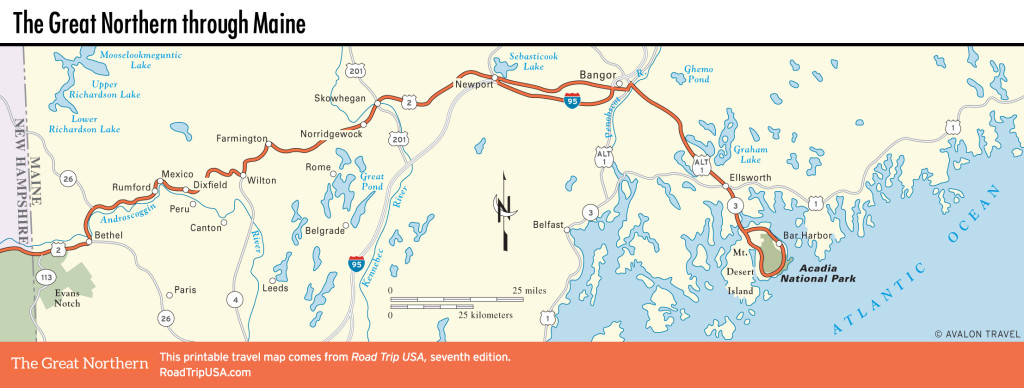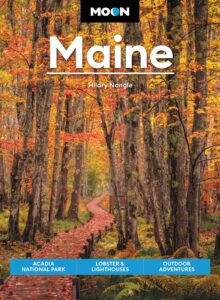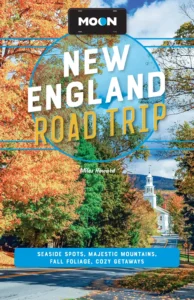Farmington and Skowhegan
Farmington
Like many other northern Maine towns, Farmington (pop. 7,619) was first settled by soldiers who fought in the Revolutionary War. The rolling hills that surround it still hold a few farms and orchards, but as elsewhere, the economy revolves around trees—both as tourist fodder during the fall color sweeps and as pulp for paper mills (there’s a big pulp mill just south of town on US-201). US-2 bypasses the center, but the downtown area has a few blocks of tidy brick buildings housing barber shops, bookstores, and cafés—not to mention the too-cute Narrow Gauge Cinema (123 Narrow Gauge Square., 207/778-2881 or 207/778-4877 for movie schedule)—supported in large part by the presence of the large Farmington campus of the University of Maine.
On the south edge of downtown, at the junction of US-2 and Route 4, near where the Farmington Diner used to sit, family-run Gifford’s Famous Ice Cream (293 Main St., 207/778-3617) serves silky-smooth “frappes” and luscious high-fat cones.
Between Skowhegan and Farmington, US-2 passes through a pair of quietly quaint places. Norridgewock is a historic hamlet, now home to a New Balance shoe factory. The region’s real draw is south of US-2: the Belgrade Lakes, a chain of seven lakes circled by ageless vacation cabins and summer camps. It was this idyllic location that inspired Ernest Thompson to write the play On Golden Pond, later made into that weepy Fonda-family movie, though the movie was filmed at New Hampshire’s Squam Lake, off US-3 in the White Mountains.
Skowhegan
First settled in 1771 on an island in the Kennebec River, the midsize mill town of Skowhegan (pop. 6,297) was the birthplace of Margaret Chase Smith (1897-1995), one of Maine’s most renowned politicians and a 36-year veteran of the U.S. House and Senate. Her home, set on 15 riverside acres (6 hectares), is now the Margaret Chase Smith Library Center (56 Norridgewock Ave., 207/474-7133, Mon.-Fri. 10am-4pm, donation). Northwest of town, the complex includes a museum depicting her life and Cold War times, when Smith was the first U.S. senator to stand up to the red-baiting character assassination of Joe McCarthy’s Communist “witch trials.”
Skowhegan’s other larger-than-life character stands alongside US-201, just north of US-2: the Skowhegan Indian, a 62-ft (19-m) statue sometimes billed as the “Largest Wooden Indian in the World.”
North from Skowhegan, US-201 runs along the Kennebec River, offering some of Maine’s greatest fall foliage vistas. One of the prettiest stretches is around the town of Bingham, about 25 mi (40 km) north of Skowhegan. On US-201 a mile (1.6 km) south of town, you can catch an alfresco movie at the Skowhegan Drive-In (207/474-9277) on weekend nights all summer long.
East of Skowhegan, US-2 veers away from the river across low, rolling hills covered with pine and birch forests, the only signs of habitation a few trailer homes and scraggly farms.
Related Travel Map
















